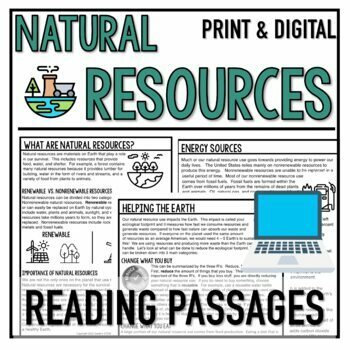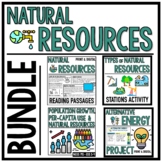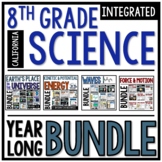Natural Resource Reading Passages with Comprehension Questions
Sarah's STEM stuff
3k Followers
Grade Levels
6th - 8th
Subjects
Resource Type
Standards
NGSSMS-ESS3-3
Formats Included
- PDF
Pages
9 + digital copies
Sarah's STEM stuff
3k Followers
What educators are saying
This was a good activity for use with my7th grade science students. It was engaging and helpful. Thank you for a great resource.
My students found this resource engaging and I really thought they enjoyed learning about Natural Resources.
Also included in
- This bundle focuses on natural resources and how their use affects Earth. Students start by learning the difference between nonrenewable and renewable resources and examples of each. Then students model the mining process by mining for chocolate chips and seeing how extracting resources affects thPrice $15.20Original Price $19.00Save $3.80
- Teaching is hard! Make things easier with this bundle that has everything you need for the full year. This year long bundle includes everything you need to teach a middle school level course that meets the NGSS 8th Grade integrated standards for California. This bundle contains a variety of engagiPrice $185.00Original Price $252.50Save $67.50
Description
Support reading comprehension in your science class with these focused reading passages about natural resources! This no prep reading resource contains 3 one page reading passages to help your students explain the differences between renewable and nonrenewable resources and identify ways to help the Earth.. Each reading passage is followed by reading comprehension questions to focus the students attention on the main topics.
Each engaging non-fiction reading passage focuses on the topics below:
- What are Natural Resources? Focuses on what natural resources are, renewable vs. nonrenewable resources, and the importance of careful use of our resources .
- Energy Sources This reading focuses on renewable and nonrenewable energy sources used in the United States.
- Helping the Earth/Ecological Footprint Students read about ways they can reduce their natural resource use and learn about their ecological footprint.
Digital copies of reading and questions are included. These are great to use as a sub plan, focused reading, etc. Readings are aligned to NGSS MS standards.
Questions & Answer Keys for Each of the Reading Passages!
Total Pages
9 + digital copies
Answer Key
Included
Teaching Duration
N/A
Report this resource to TPT
Reported resources will be reviewed by our team. Report this resource to let us know if this resource violates TPT’s content guidelines.
Standards
to see state-specific standards (only available in the US).
NGSSMS-ESS3-3
Apply scientific principles to design a method for monitoring and minimizing a human impact on the environment. Examples of the design process include examining human environmental impacts, assessing the kinds of solutions that are feasible, and designing and evaluating solutions that could reduce that impact. Examples of human impacts can include water usage (such as the withdrawal of water from streams and aquifers or the construction of dams and levees), land usage (such as urban development, agriculture, or the removal of wetlands), and pollution (such as of the air, water, or land).







